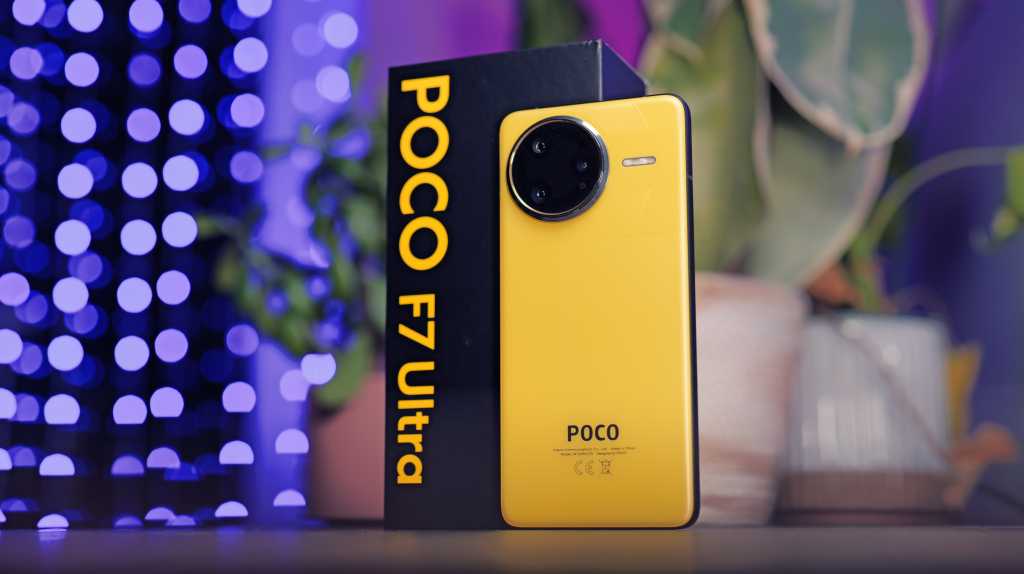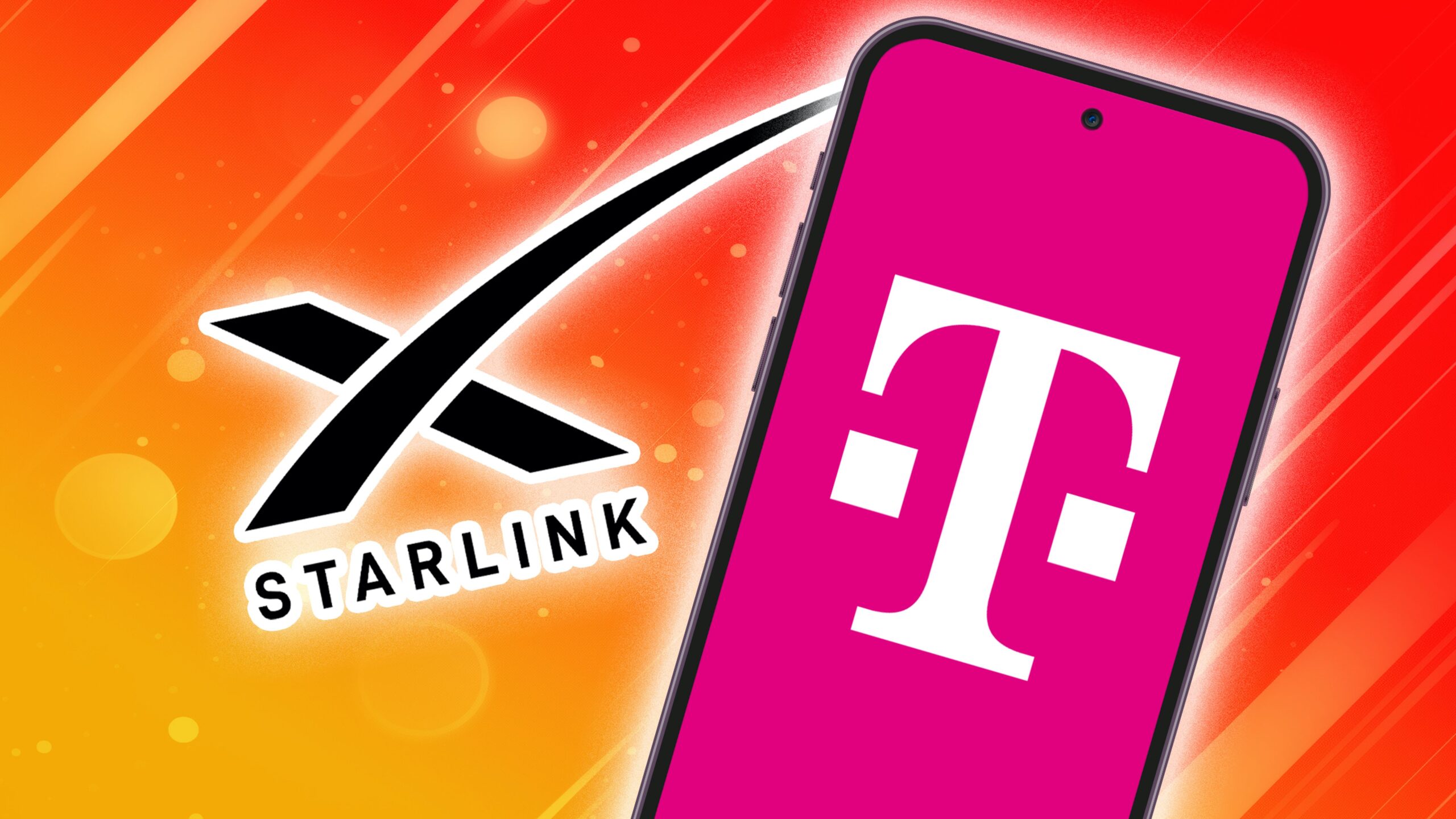Lately, I’ve been living with Poco’s latest phone, the F7 Ultra.
Poco is a brand that’s known for delivering affordable mid-range phones with flagship-level features, but this model is a little different. It packs a true flagship chip – the Snapdragon 8 Elite. In classic Poco fashion, rather than asking for the big bucks, it comes at an approachable price of just £649 in the UK.
I can’t help but compare it to Apple’s latest, the iPhone 16e. It’s available for only slightly less, starting at £599/$599, with both phones matching their more expensive rivals by offering flagship chipsets.
However, beyond that, the two devices couldn’t be more different. Let’s take a look.
Poco F7 Ultra vs iPhone 16e: Design & display
The two phones sport drastically different designs.
The iPhone 16e is a compact phone with a screen that only measures 6.1 inches diagonally. The Poco F7 Ultra, on the other hand, measures almost 6.7 inches. That means it’s in between the iPhone 16 Pro and Pro Max in screen size, both of which are significantly larger than the iPhone 16e.
Luke Baker
Whether that’s a good or a bad thing is up to you. Many people prefer larger screens as they provide a nicer viewing experience when watching videos and navigating websites, but you might prefer a smaller display, which makes the phone easier to manage and more comfortable in your pocket.
What’s not up for debate is the specification. The iPhone 16e only has a 60Hz refresh rate, whereas the F7 Ultra supports up to 120Hz. This makes scrolling look significantly smoother on the Poco, and if you’re a gamer, it could give you a competitive edge in fast-paced titles.
The F7 Ultra also boasts a brighter display – it’s able to reach 3200 nits at peak while viewing HDR content, or 1800 nits in normal use. The iPhone 16e, meanwhile, peaks at 1200 nits, or 800 nits in normal use. It’s a massive difference, and if you’re using your phone out in the sunshine, you’ll definitely notice.
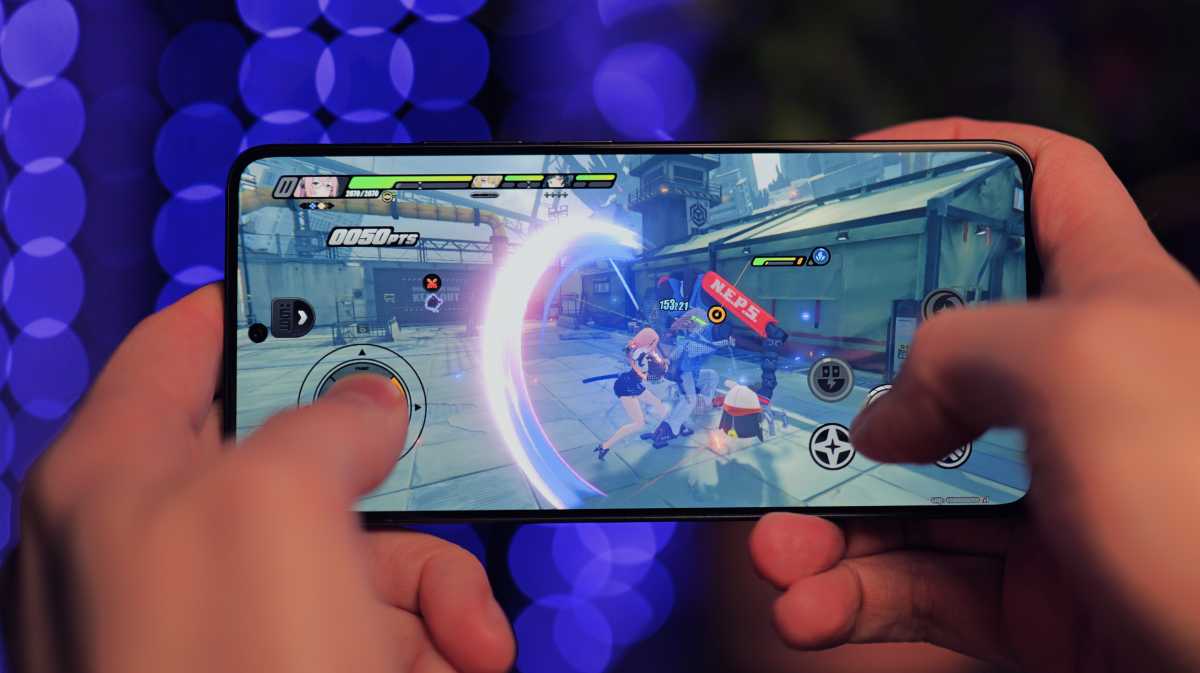
Luke Baker
The iPhone 16e also has a massive notch in its display, which really eats into an already small screen, though it does enable Face ID.
The Poco has a comparatively tiny punch hole for its selfie camera, and it’s much less intrusive. The bezels are much smaller, too, which gives the F7 Ultra a much more modern look. However, it only supports a basic face unlock, with the under-display fingerprint sensor acting as the main unlocking method.
The Poco has a comparatively tiny punch hole for its selfie camera, and it’s much less intrusive
Both phones sport premium designs with aluminium frames and glass rear panels, and both are IP68 rated, so a bit of dust and water will pose no threat. One area where the iPhone pulls ahead, though, is with the ‘Ceramic Shield’ glass that covers the display.
There aren’t too many details about the F7 Ultra’s ‘Poco Shield’ glass, but I can’t imagine it beating Apple’s in the long term, as in my experience, iPhones are among the most scratch-resistant phones on the market.
Poco F7 Ultra vs iPhone 16e: Cameras
The iPhone 16e has only a single camera on its rear. It’s a 48Mp unit with a pretty tiny 1/2.55-inch sensor.
By contrast, the F7 Ultra packs three rear cameras, a 50Mp main camera (1/1.55-inch) a 50Mp 2.5x telephoto and a 32Mp ultrawide camera.
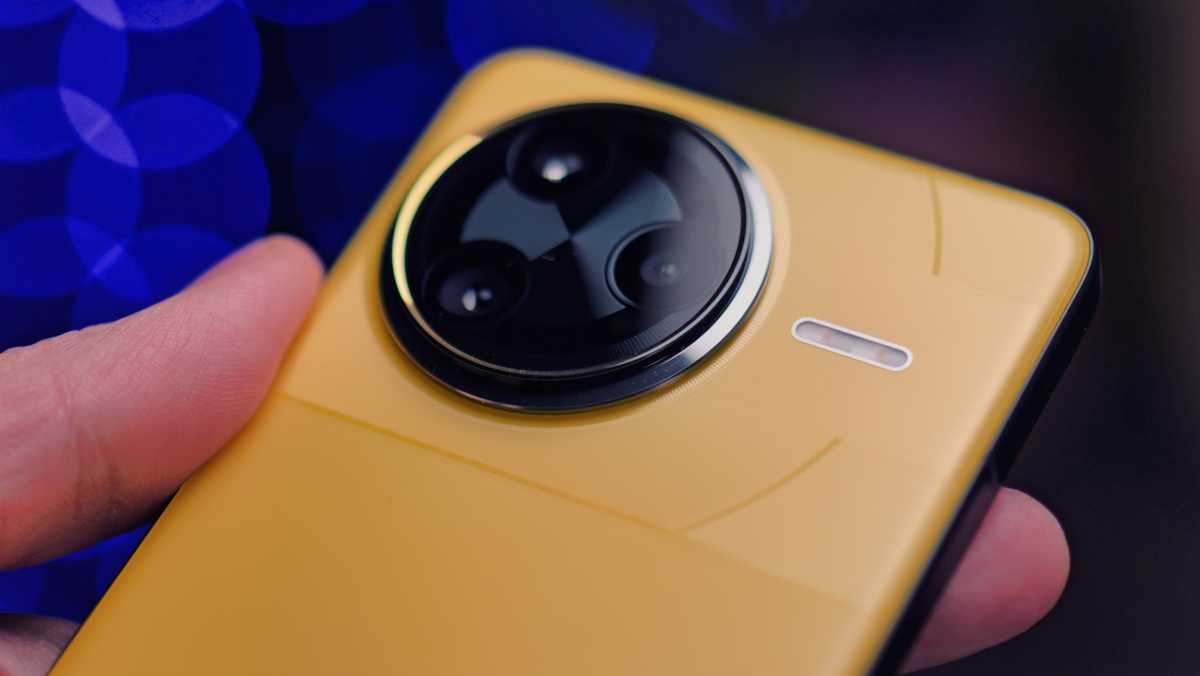
Luke Baker
It goes without saying that this makes the Poco much more versatile for photography, as you can capture so many more perspectives. The F7 Pro walks all over the iPhone when it comes to zoom, as well. If you’re taking photos at a concert, there’s absolutely no contest.
The F7 Pro walks all over the iPhone when it comes to zoom, as well. If you’re taking photos at a concert, there’s absolutely no contest
Around the front, the selfie camera bests the iPhone in terms of resolution. It’s a 20Mp snapper, compared to the iPhone’s 12Mp unit. However, the iPhone has autofocus on the selfie camera, while the Poco doesn’t. So it’s not quite as clear-cut. If you love taking selfies, the iPhone might have the upper hand there.
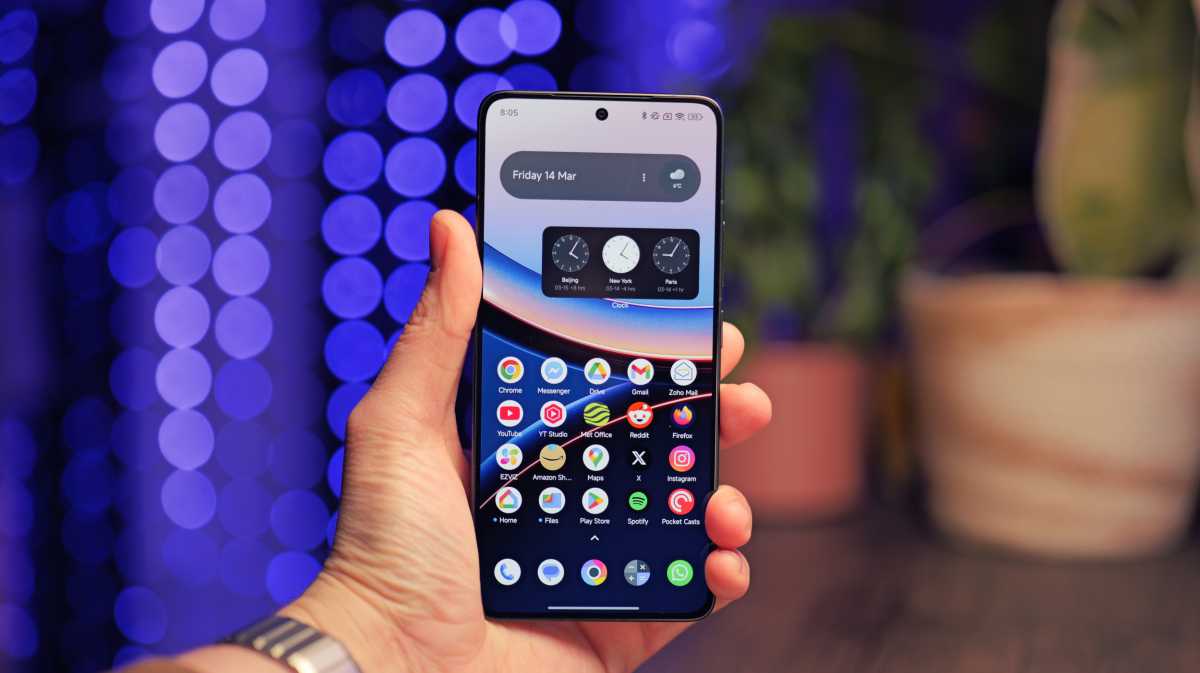
Luke Baker
After extensive testing, I found that the Poco F7 Ultra’s cameras can’t quite keep up with top-tier flagships, but they’re not that far off. The iPhone 16e, with its singular rear camera, seems like a step back in time. If you’re used to having an array of lenses at your disposal, it’s sure to lead to frustration.
Poco F7 Ultra vs iPhone 16e: Battery & Charging
The Poco F7 Ultra uses the latest silicon-carbon battery technology to cram a 6000mAh battery into its relatively slim chassis. Meanwhile, the iPhone 16e only has a 4005mAh cell. I haven’t tested the iPhone 16e, so it’s hard to say how it stacks up, but I was managing two days on a charge with the Poco, and I can’t imagine you’ll be able to do that on the iPhone.
When it’s time to charge, the Poco is miles ahead yet again. It boasts 120W wired fast charging and 50W wireless charging. That’s enough to take you from fully flat to 100% charged in just half an hour.
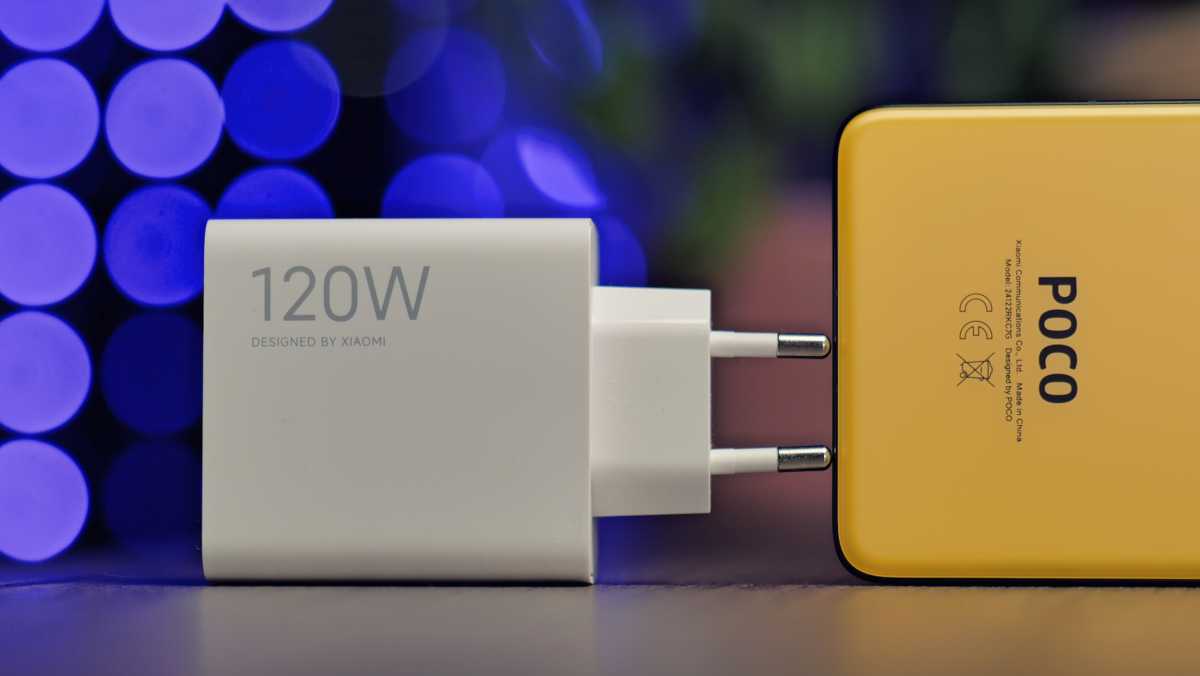
Luke Baker
Apple is a little coy about its charging speeds, but other sources say the 16e charges at around 20W with a wire or 7.5W wirelessly. The big claim is that it can charge to 50% in half an hour, which is nice, but it’s nothing to brag about when the Poco will have already fully charged. Not to mention the fact that it has a much bigger battery which would usually take longer to charge.
I was managing two days on a charge with the Poco, and I can’t imagine you’ll be able to do that on the iPhone
Poco F7 Ultra vs iPhone 16e: My overall verdict
The Poco F7 Ultra stands out as one of the best value phones on the market, especially if performance is a top priority. The iPhone 16e uses the latest Apple chipset, so it’s also a top performer, but you don’t have to look far to see where the corners have been cut.
With a single camera, a small battery, a small 60Hz display and slow charging, the 16e certainly doesn’t feel like a flagship. The Poco F7 Ultra, on the other hand, is an excellent all-rounder. Almost every specification is flagship-grade, and it’s only the cameras that are a little less impressive than phones that cost twice as much. Even then, they come much closer to flagship territory than the iPhone.
I’m pleased to see Poco adopting higher-end hardware, and the fact that it remains affordable is even better. If you want bang for your buck, Apple has never been the way to go, but with devices like this around, that gap is bigger than ever.
